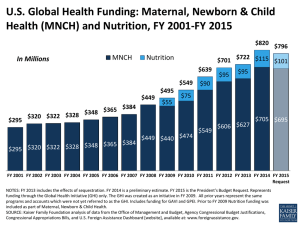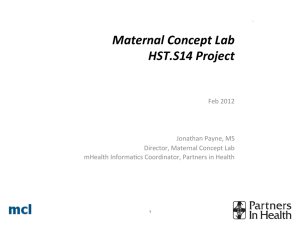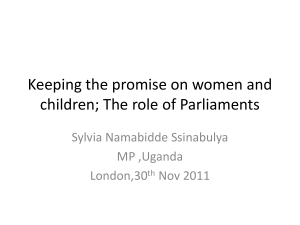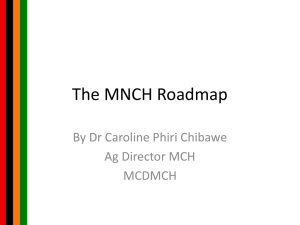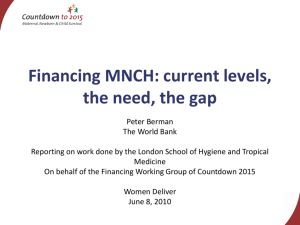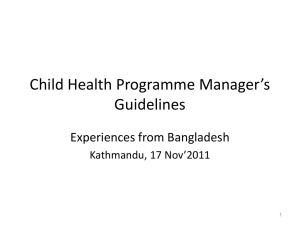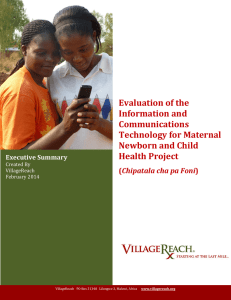Power of design DCS for CBNC development Ethiopia AT
advertisement
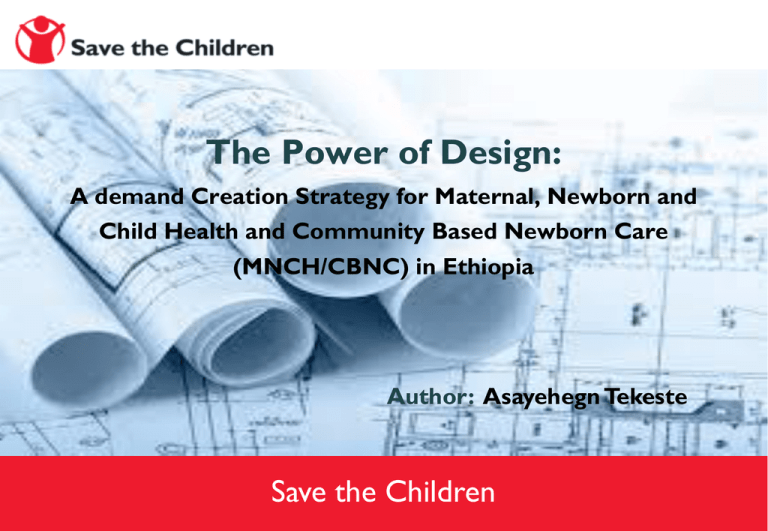
The Power of Design: A demand Creation Strategy for Maternal, Newborn and Child Health and Community Based Newborn Care (MNCH/CBNC) in Ethiopia Author: Asayehegn Tekeste Save the Children 1 Background • Low illnesses recognition and care-seeking which continues to drive high mortality rates. • A comprehensive MNCH/CBNC Demand Creation Strategy needed 2 Background • The Ethiopian Federal Ministry of Health (FMOH) launched the Community-Based Newborn Care (CBNC) package in 2013. – Includes evidence-based interventions targeting mothers and their newborns during pregnancy, childbirth, and the postnatal period. – Integrated into the existing maternal and child health interventions • SCI supporting the CBNC implementation in the 4 agrarian regions – total 21 Zones and 2 special woredas through funds from USAID and UNICEF • Started with a few learning Zones and now at scale 3 Methodology • A participatory design process engaged leadership from FMOH, MNCH Technical Working Group and national stakeholders. • Major determinants of Maternal Newborn, and Child Health (MNCH) service utilization, existing health and community systems, and platforms for improving family and social norms were analyzed. • Learning exchange visits, a barriers analysis, a systematic desk review of the local and global evidence-base, and a design workshop yielded experience on improving MNCH. • Key approaches demonstrating effectiveness were analyzed for feasibility, scalability and sustainability. 4 Results • MNCH demand creation strategy was designed – Scalable and potentially sustainable – Well aligned with national systems, tools and guidelines • 5 P’s: Purpose, Principles, People/Platforms, Processes and Products • Purposes: To improve maternal and newborn outcomes • through increased demand creation for CBNC. • Principles: Community strengthening, Sustainability, Scalability, Equity, Multi-sectoral collaboration, Enabling environment, Continuum of care, Quality-Matching-Demand 5 Result • Peoples and Platforms: • Those closest to the mother and newborns including family members and community leaders and decision makers • Peoples and Platforms: • Health Development Army, Kebele Command Posts/health Steering Committees, Health Workers, Service Providers 6 Results • Process: Community capacity strengthening approaches leveraging multi-sectoral social networks; formal and informal leaders and traditional systems Explore Issues & Set Priorities Prepare to Mobilize Prepare to Scale-up Organize Community for Action Evaluate Together Plan Together Act Together 7 Results Effective Community strategies selected include: – Engaging family decision makers; – Strengthening pregnant women’s forums; – Active male involvement; – Leveraging the non- delivery role of TBAs; – Service quality improvements; – Support to the woman development army; – Community use of data and – Creating conducive environment for demand generation 8 Results • Orientation and Capacity building for DCS roll out – Regional, zonal & Woreda (district), Primary Health Care Unit (PHCU) and Kebele levels. • WrHO and PHCU routinely support Kebele Command Posts and HPs • Supportive supervision guidelines and tools developed and used • M&E and documentation systems (DHIS-2) put in place – Strength of implementation, service utilization trends, MNCH practices, and community capacity. • Project Baseline addressed family health practice and service utilization 9 Discussion/Lessons • Encouraging support from all counterparts FMOH, RHBs and sector offices – Alignment with policy priorities – Strengthening existing systems - PHCUs SS • Step-by-step process for capacity building (Learning-by-doing) • Demand without Services Quality improvement? • Health system had a huge need for support on DC • Strategy should respond to varying contexts, flexible to accommodate emerging themes and challenges 10 Conclusion: • Thorough analysis of health and community systems coupled with sound program design can help to effectively integrate MNCH demand creation strategies into national health systems. • Demand creation strategies designed primarily with, and not secondary to, service delivery improve the strength of implementation for improved MNCH. 11 Thank you! Amasaginalehu! 12
